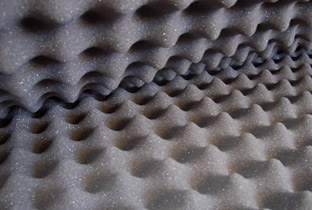Published
Wed, Mar 2, 2011, 17:01
- This week we look at how to apply budget acoustic treatment to your studio room.

For the past 4 months I've been building and putting together a new studio. It's the fourth or fifth time in my career that I've moved space and while my setup has improved over time, it never ceases to amaze me just how different the same technology can sound in different environments.
This week, I'm addressing some of the issues of treating a studio so that the mixes produced in one room translate well to others. The technology you own is only partly responsible for this (more on monitors, for instance, shortly) as a huge part is the room itself. It stands to reason that if you work in a room which falsely amplifies bass, you'll find your mixes are bass-light on other systems. Equally, overly bright or flattering rooms aren't friends to mixes you hope will travel well.
There are plenty of companies who specialise in acoustic treatment products and many of these can solve issues within a room to leave you with the perfect recording/mixing environment and, for those with the requisite money, these services can prove invaluable. This article is aimed at those on a budget, though, who'd perhaps prefer to spend what little money they have on a much needed new piece of kit rather than foam panels and industrial glue.
Firstly, let's address monitoring. Speakers should, whenever possible, be mounted at listening height. If your monitors sit on your desk, you'll be amazed by how the sound of them improves if you raise them, particularly if you're able to do so in a way which avoids 'hard contact' with your desk. Stacks of magazines aren't necessarily attractive but stacks of magazines covered with a scarf or attractive fabric won't offend anyone and the benefits of a less than completely solid surface between your desk and speakers will become clear as frequencies are absorbed during playback. Get monitors away from walls as much as possible too, as the reflections from a wall behind the listening position are responsible for enormous amounts of false bass content, in particular.
I've found that the next most useful studio area to 'damp' is that directly behind the listening position. Reflections from walls behind you also falsely colour your mixes and this introduces one of the great acoustic treatment/studio comfort symbiotic relationships—the trusty studio sofa. If you have a sofa in your studio, position it behind you. For a start, clients and friends who come round to listen to your tracks will have somewhere comfortable to sit between your monitors but better still, all of the foam will help damp unwanted reflections.
Next, address the space between your monitors and the wall behind them—the space directly in front of you as you mix, in other words. Again, any way to break up reflections here helps and if you do have budget for a couple of acoustic panels, this would be one of the best places to put them. Otherwise, building your own plywood frames crammed full of rock-wool and then covered with a canvas or other soft material finish is much less expensive than you'd think.
Lastly, make sure that floor to ceiling reflections are as dead as possible at the listening position. A carpeted floor helps enormously, whilst laminate or wood floors can be treated effectively with a rug. You don't have to kill both floor and ceiling for treatments to be effective so if you're handy in the DIY department, you could even build yourself an absorber/diffuser panel with foam panels and plywood, creating a false ceiling which you'd attach to your real one, directly above the listening position.
Books on shelves can make a major difference too—if you happen to work in a room which rubs shoulders with a collection of books, use these to your advantage by, ideally, working with them on shelves behind you or, still usefully, directly in front. Any large book collection off to one side or the other will radically alter the stereo image so avoid this if possible. Hopefully, these first suggestions will encourage you to think about the contents of your studio and how furniture, in particular, might be used to aid your working environment.